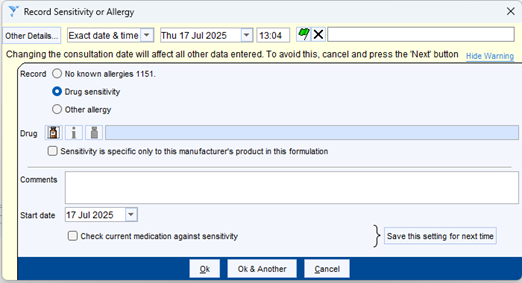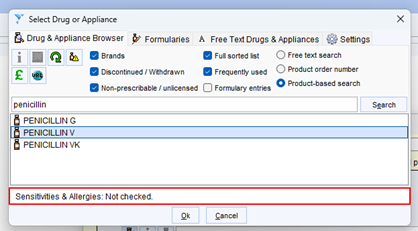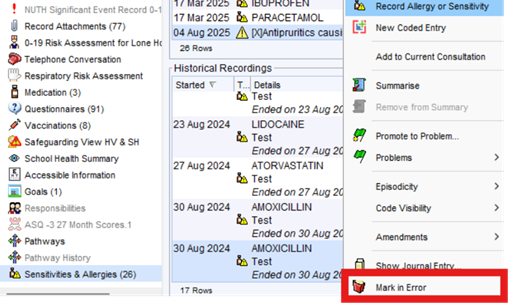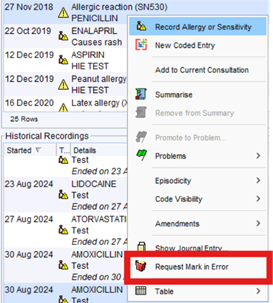Introduction
If a patient receives a medicine or other substance to which they have an allergy or sensitivity, it poses a potential risk to their wellbeing. All medications have the potential to cause side effects, also known as ‘adverse drug reactions’, but not all of these are allergic in nature. Other reactions are idiosyncratic, pseudo-allergic or caused by drug intolerance. Misidentifying a side effect as an allergy can lead to unnecessary avoidance of effective treatments. Prescribers may adjust dosage or offer supportive treatment to relieve symptoms, for example, adding an allergy for a patient who states that penicillin made them nauseous could result in a whole class of crucial antibiotics being ignored in an emergency.
Purpose of this Guidance
information.
Scope
All clinical staff who provide clinical care to patients should ascertain and record allergies and medication sensitivity in accordance with this guidance.
Responsibilities
Who can ascertain and document allergy and medicine sensitivity status:
The prescriber retains the principal responsibility for ascertaining allergy status of any patient for whom they prescribe which usually forms part of the consultation process. However, it is the responsibility of every clinical staff member involved in the medication process, prescribing, dispensing or administration, to take every practical step to establish the allergy status of the patient. The only exception to this is in an emergency situation where this information is unobtainable and the risk of not treating the patient outweighs the risk of having the information needed to make a fully informed decision.
Health Care Assistants should escalate all non-documented allergy or sensitivity information upon the patient/carer/guardian reporting it, to their clinical lead as soon as possible before any treatment is performed.
Electronic Documentation of Allergy/Sensitivity in SystmOne
An allergy status should be reviewed and updated at each episode of care as this may change over time and confirmed from a combination of the patient, medical records and where appropriate, the patient’s carer and/or guardian.
Please choose one of the below as seen in the template:
No Known Allergies
Drug sensitivity
Other Allergy

If drug sensitivity or other allergy is selected, in the pop up, enter the drug/other allergy name into the search box and click the appropriate generic title. Click OK.

In the comments section of the template, please record the following:
Drug name – generic, brand, strength, route and formation if known
Signs, symptoms, and severity.
In the date field, please document when it occurred if known.
Example below:

Allergy Status inaccurate
Where recorded allergies are thought to be inaccurate, any Nurse, Midwife or Allied Health Professional must discuss this with the patient’s Consultant or GP and the decision fully documented with name of Consultant/GP, date and time of discussion.
To remove the allergy, it should be marked in error by going through to Sensitivities and Allergies in the clinical tree. Select the incorrect allergy and right click. If you documented the incorrect allergy, click on mark in error and it will remove it immediately. If another user/service documented it, on right clicking, request mark in error and a task will be sent to the original documenter.
Examples below:
| Mark in Error | Request Mark in Error |
 |
 |
Record the reason for Marking in Error pop up:

Guidance agreed by:
Allison Deagle, Digital Health
Emma Butler, SystmOne Product Owner
Alex West, Clinical Pharmacist
Raman Diddee, Clinical Safety Officer
Agreed: 17th September 2025
Review due: 17th September 2027